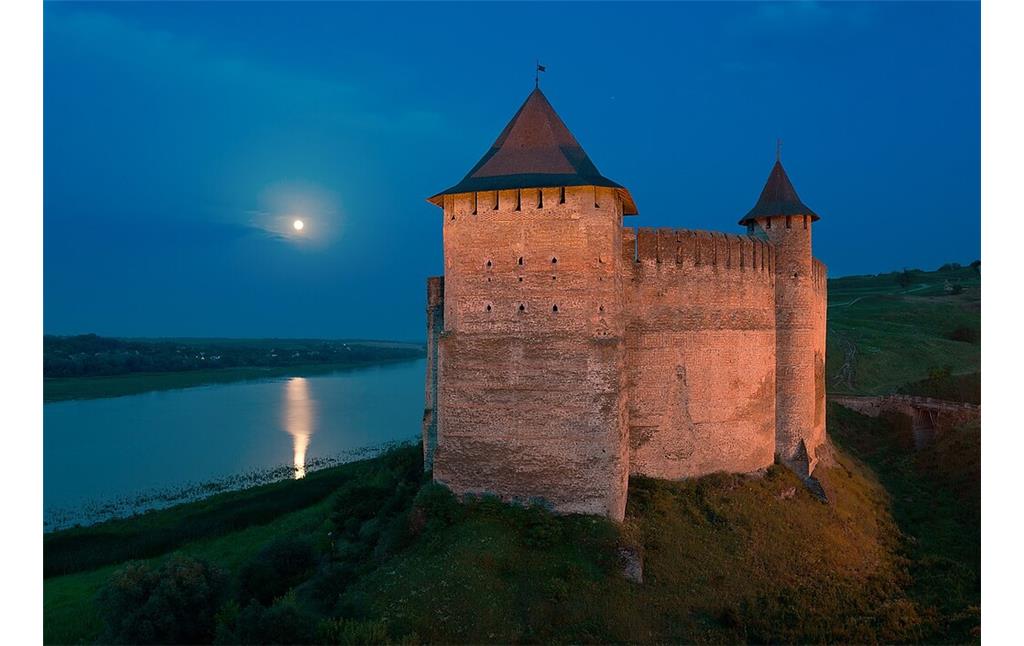
Such a desirable fortress!
According to various assumptions of historians, Khotyn Fortress was founded in the second half of the 13th or 14th century by the Principality of Galicia–Volhynia or Moldavian Principality (depending on the adopted date). The fortress had a border location and controlled the strategically important crossing of the Dnister River. Therefore, great battles often took place near the walls of the fortress, in particular, between the armies of the Ottoman Empire on the one hand, and the Polish–Lithuanian Commonwealth and Zaporizhzhya Cossacks on the other hand, in 1621 and 1673. Khotyn Fortress was one of the most powerful fortresses in Eastern Europe and never conquered by assault, only by long-lasting blockades. For centuries the fortress was part of various states (Principality of Galicia-Volhynia, Moldavian Principality, Ottoman, Austro-Hungarian, Russian empires), but the longest time it was owned by the Moldavian Principality.
Two worlds intertwined here
Staying of Khotyn Fortress under the influence of both Christian and Muslim cultures largely predetermined its architectural style. In the second half of the 15th century, being a part of the Moldavian Principality, Khotyn Fortress received thick (up to 5 Meter) and high (up to 40 Meter) walls and towers decorated with red brick ornaments – rows of images of „Babylon” (probably a symbol of architects of wisdom) and “Golgotha” (mount where Jesus Christ was crucified). During this period, a castle church with a combination of elements of the Gothic and Romanesque styles was built.
At the beginning of the 18th century, after the Ottoman administration and the garrison were located in the fortress, the castle church was turned into a mosque with a minaret. Around the citadel, the Ottomans built a new fortress with a mosque, barracks, workrooms, bathhouses, bastions, gates, and towers. In the decoration of individual buildings, especially gates, elements of traditional Ottoman architecture were used, as well as signs associated with military symbols.
In the first half of the 19th century, the Church of St. Oleksandr Nevskyi in the neoclassical style was built for the religious needs of the Russian military garrison located in the territory of Khotyn Fortress.
The fortress today
Khotyn Fortress is a well-preserved complex of the castle and fortress. Tourists come to see both: the castle (defensive walls, towers, Commandant’s palace and courtyard, castle church, barracks, castle draw-well) and the fortress (bastions, gates, ruins of a tower over a stream, a bridge over a stream, ruins of a mosque with a minaret, garrison workrooms, the church of St. Oleksandr Nevskyi).
Several thematic exhibitions are presented in the castle. The fortress hosts festivals of medieval battle and filming.
(Maryana Senkiv, ukrainer.net & Lviv Polytechnic National University, 2020; Special thanks to ukrainer.net)
Internet sources
de.wikipedia.org: Chotyn
de.wikipedia.org: Chlacht bei Chotyn (1673)
en.wikipedia.org: Battle of Khotyn (1673)
en.wikipedia.org: Khotyn Fortress
khotynska-fortecya.cv.ua/history: History of Khotyn Fortress
khotynska-fortecya.cv.ua/index-en: Website of Khotyn Fortress
resource.history.org.ua: Хотинська фортеця
trip.cv.ua: Festung Chotyn
uk.wikipedia.org: Хотинська фортеця






















